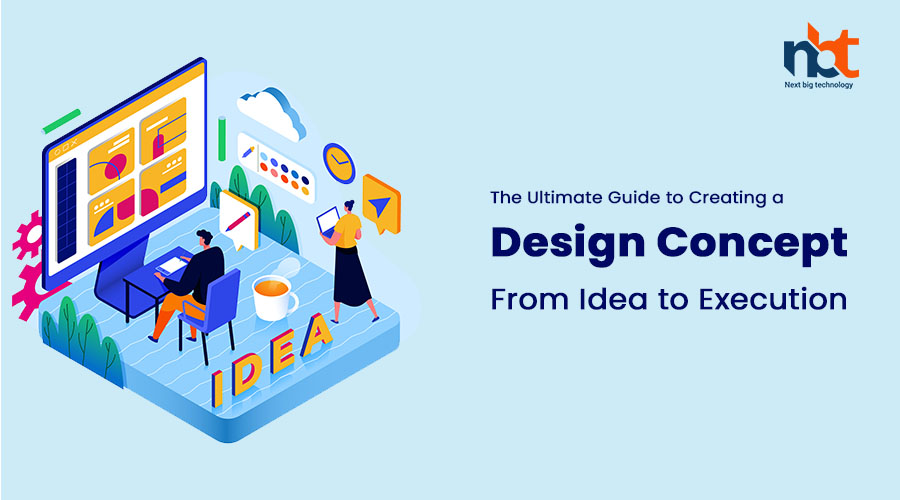Introduction: Creating a design concept is an essential step in the design process, whether you’re designing a website, mobile app, product, or any visual project. A design concept sets the foundation for the entire design, guiding the creative direction, visual aesthetics, and user experience. In this comprehensive guide, we’ll take you through the process of creating a design concept from start to finish. We’ll cover key considerations, research, ideation, visual elements, and execution, helping you bring your design ideas to life with purpose and clarity.
- Define the Project Scope and Objectives: Before diving into the design process, it’s crucial to define the scope and objectives of your project. Understand the target audience, project goals, and desired outcomes. Determine the problem you’re solving or the message you want to convey through your design concept. Having a clear understanding of the project’s purpose and objectives sets the stage for a focused and effective design.
- Conduct User and Market Research: To create a design concept that resonates with your target audience, conduct thorough user and market research. Understand the needs, preferences, and behaviors of your target users. Analyze competitors and existing solutions in the market to identify gaps or opportunities for innovation. This research will inform your design decisions and help you create a concept that addresses user needs while standing out from the competition.
- Ideation and Sketching: Once you have a clear understanding of the project’s scope and user insights, begin the ideation process. Brainstorm ideas, explore different design directions, and sketch rough concepts on paper or using digital tools. Encourage creativity and free thinking during this stage, allowing yourself to explore various possibilities without constraints.
- Refine the Concept and Create Mood Boards: From the initial ideation, select the most promising concepts and start refining them. Create mood boards or visual collages that capture the overall look, feel, and mood you want to convey through your design concept. Curate images, colors, typography, and other visual elements that align with the project’s objectives. Mood boards serve as a visual reference and help establish a cohesive visual language for your design concept.
- Define the Design Elements: With the refined concept and mood boards, it’s time to define the design elements that will shape your concept. Consider typography, color palette, imagery, illustrations, icons, and other visual components that will bring your design to life. Ensure that these elements align with the project’s objectives, target audience, and desired emotions or message you want to convey.
- Create Wireframes and Prototypes: Translate your design concept into wireframes or low-fidelity prototypes. Wireframes outline the structure and layout of your design, focusing on content hierarchy and user flow. Prototypes add interactivity, allowing you to test the usability and functionality of your design concept. Use tools like Sketch, Figma, or Adobe XD to create these visual representations and gather feedback from stakeholders or potential users.
- Iterate and Gather Feedback: Iteration is an essential part of the design process. Share your design concept with others, gather feedback, and incorporate insights to refine your concept further. Seek feedback from users, clients, or colleagues to gain different perspectives and ensure your design aligns with their expectations. Iterate based on the feedback received, making necessary adjustments and improvements to enhance the overall user experience and visual appeal.
- Develop the Visual Design: With a refined concept and valuable feedback, it’s time to develop the visual design of your project. Pay attention to details, ensure visual consistency, and align the design elements with your concept. Consider typography styles, color variations, spacing, and imagery choices. Aim for a visually pleasing and cohesive design that aligns with your concept and resonates with your target audience.
- Test and Validate the Design: Before finalizing your design concept, conduct user testing to validate its effectiveness. Use usability testing methods to gather insights on how users interact with your design, identify any pain points or areas for improvement, and make data-driven decisions. User testing helps ensure that your design concept meets user expectations, addresses their needs, and provides a positive user experience.
- Document and Present Your Design Concept: Once your design concept is refined and validated, document it comprehensively to communicate your vision and execution to stakeholders. Create a design presentation or document that includes visual mockups, annotations, design rationale, and user insights. Clearly articulate the problem your design concept solves, the user benefits it offers, and how it aligns with the project’s objectives. Present your design concept with confidence and clarity, highlighting its unique value and potential impact.
Conclusion: Creating a design concept is a crucial step in the design process, setting the stage for a successful and impactful project. By following this ultimate guide, you can approach the creation of a design concept with structure, purpose, and creativity. Define the project scope, conduct thorough research, ideate, refine, and develop the visual elements that bring your concept to life. Through iteration, user feedback, and validation, you can ensure that your design concept resonates with the target audience, addresses their needs, and provides an exceptional user experience. Remember, the journey of creating a design concept is as important as the final outcome, so embrace the process, stay open to new ideas, and let your creativity shine.










